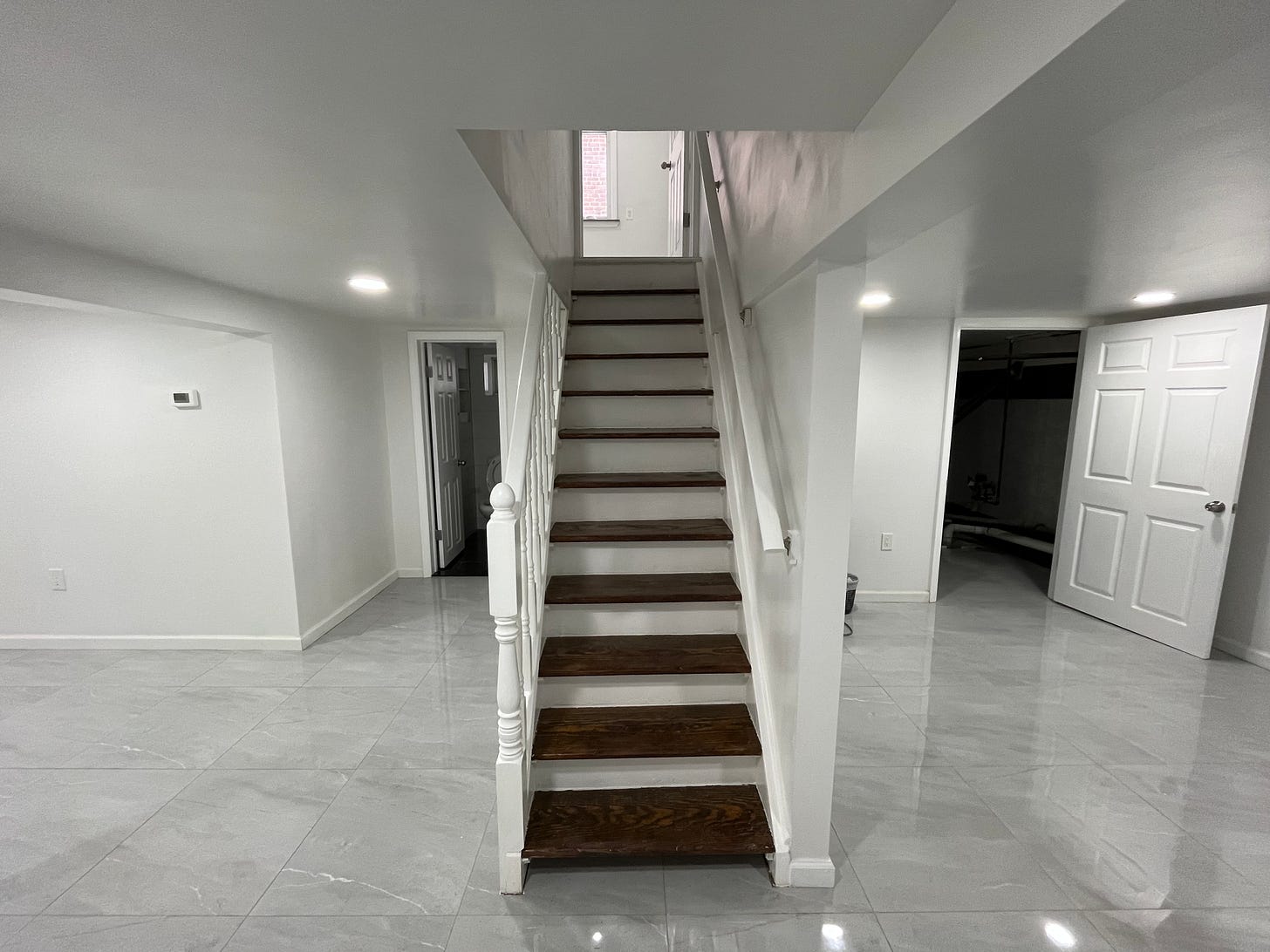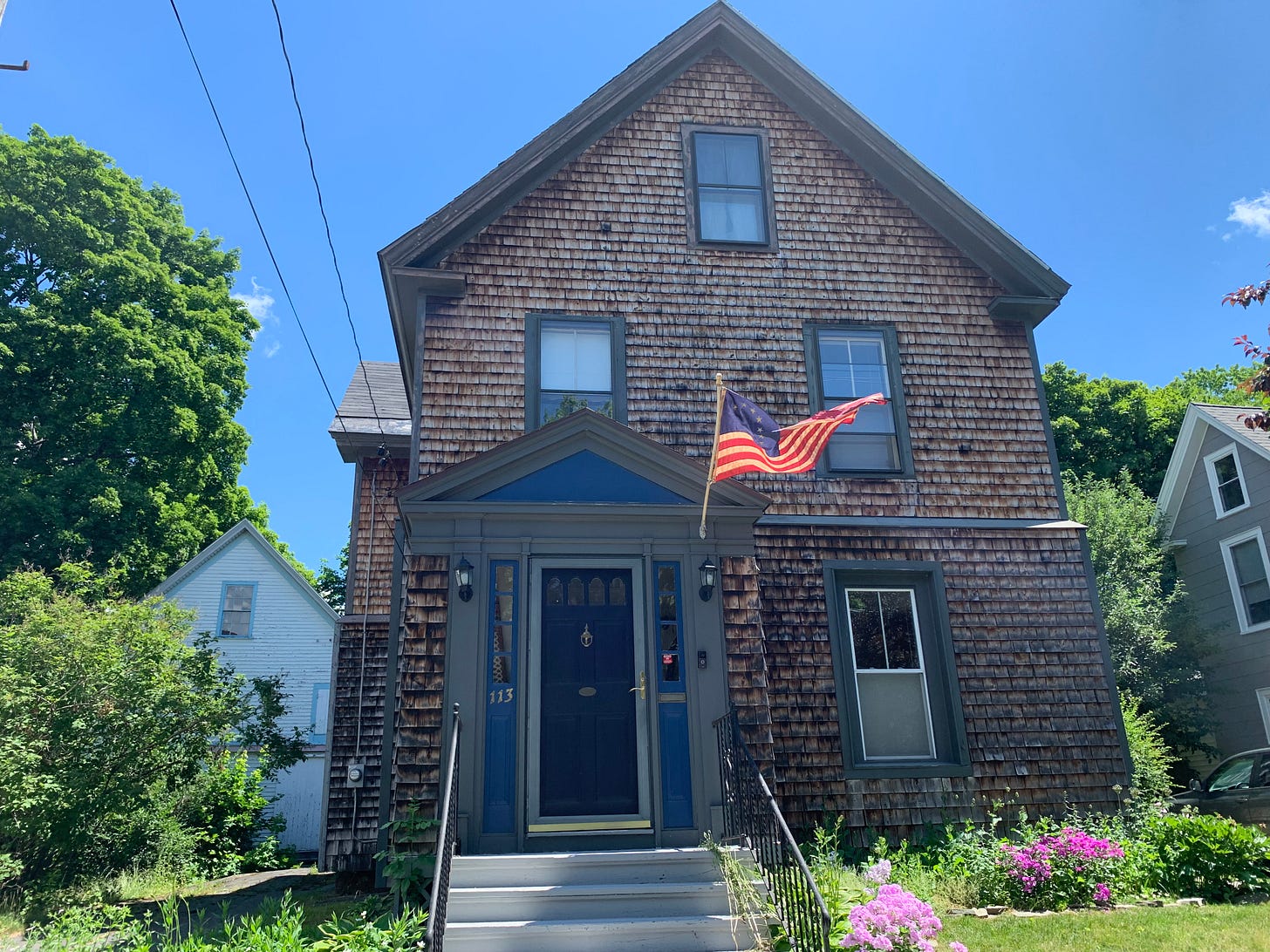On the Trail of: John Williams' ancestry and childhood
The start of a new series about the research spelunking I did for the book—and some of the incredible finds along the way.
I want to take you on a journey. One of the most fun and rewarding parts of writing a biography is the research—the treks to important historical sites, the hunting trips inside libraries and archives… the microfiche. Researching the life of John Williams took me down into the basement of Symphony Hall in Boston, out to ancient homes and department stores in Bangor, and right up the street from my house to the Fox studio lot, among other places.
Without giving too much book content away, I want to retrace some of those journeys with you and share some of my findings, photos, recordings, and more. The whole idea of this Substack, after all, is to give you a behind-the-moon glimpse into the book and its making—and to hopefully whet your appetite for the main course that arrives on September 2.
Today, join me on the trail to find John’s ancestors and his own childhood haunts.
A confession: I had never written a biography before. In fact, this is my first book. So, while I had done plenty of research before—for news articles and various histories of films and artists and scores—and picked up some very useful skills along the way, this was a whole new beast. I had basically never done any kind of deep records searching, other than at the amazing Margaret Herrick Library (the official library of the Motion Picture Academy), and I had also never done any serious genealogical research.
I realized that I would ideally be requesting records of all kinds (school, military, marriage, death, etc.), as well as doing some intensive investigation up the branches of John’s family tree. Especially when I began this project without John’s help, I was groping in the dark for a lot of this information. Remember: no one had written a proper biography yet. I was traveling into the jungle of his past… and no one had cleared any of it with a machete.
I already knew about, and frequently used, Newspapers.com—an invaluable resource that lets you search the annals of hundreds (maybe thousands) of newspapers both in the U.S. and internationally. Also, one of the cool perks of my job at USC is that I have free access to ProQuest and the archives of trade magazines like Variety and Hollywood Reporter, along with the archives of many other publications both mainstream and obscure.
But this is all “public record.” What about the enormous ocean of non-public record?
The amazing thing about old newspapers is that they do contain a lot of potent information and clues (which might include home addresses, birth and death announcements, travel news, etc.), even about non-famous people, but especially when a person finds any fame. Fortunately for me, John’s dad—Johnny Williams, Sr.—was a minor celebrity, and I found many articles about him and his activities as a drummer with the Raymond Scott Quintette and the CBS radio orchestra; that included old interviews with him as well as his mother, Katherine Williams.
But yellowed newsprint can only tell you so much. So Ali and I shipped off to Maine.
This is a building in Bangor that was once the home of Freese’s, a bustling department store downtown dubbed “Fifth Avenue in Maine.” Katherine Williams worked here for 40 years, in the children’s department and as a buyer. She would make Johnny, her only child, model the clothes (both boy’s and girl’s) that she sold.
Katherine and Johnny lived at 113 Leighton Street, in a house that’s still standing:
Now, I didn’t “learn” anything new from this trip—but there’s something indescribably helpful and even spiritual about walking on the same streets and breathing the same air that your “characters” did more than a century ago. I also got a sense of the scale of these places and their geographical relationship to each other, and perhaps a small taste of what growing up in Bangor might have been like for an outdoorsy kid like Johnny Williams. I was peculiarly interested in the trees in each of these historic locales; John is obsessed with trees, which is, in part, because he is fascinated by history.
Johnny’s path eventually led to New York by way of Boston, and I made several trips to Flushing, Queens—where Johnny and his wife, Esther, settled in the late 1920s, and where our hero was born in February 1932. The first house that infant John came home to was on Hollywood Avenue (how great is that?). On one my visits there, I knocked on the door to see if the owner might let me inside, but no one answered. However, the truck parked right in front had the license plate “VADER 66.”
Assuming that’s the owner, don’t you think they’d love to know that they live in the house where John Williams was born?
The Williams’ soon moved just a few blocks south, to a home on Poplar Avenue near Kissena Park. I came to this house on two separate trips and mustered up the courage to knock on the door, but to no avail. I came to learn that it had been bought by some private equity firm and was sitting empty. My luck turned when, on one of my sporadic visits to its Zillow page, I discovered that it was for sale! So when I was in town to see John conduct Yo-Yo Ma at Carnegie Hall last February, I arranged to tour the house—THE house where John lived from age 2 to 15.

I told the realtor that “my friend” grew up in this house and was potentially interested in buying it back—a harmless fib—without mentioning John’s name. I sent all the photos I took that day to John (via Jenny), and he got a kick out of seeing inside the old homestead for the first time since 1947. He wanted to know how much it was selling for. $1.8 million. Jenny laughed; John said his father sold it for $12,000. Jenny and I joked that we should buy it and turn it into a John Williams Museum…
Again, it’s not like I found a diary buried in the floorboard or a banker’s box full of Johnny’s old receipts, but this was a kind of time travel—a way to three-dimensionally step into the locations of John’s childhood stories and to commune with their ghosts. Shortly after he started giving me time to interview him for the book, John told me: “I said to Samantha, ‘Tim has earned this time.’ She said, ‘Why?’ I said, ‘Because he’s already seen my house in Flushing. Anybody that goes to that trouble deserves an hour of talk once in a while.’” So: thank you, Flushing!
Some of the greatest treasures I unearthed came from generous family members, both near and distant, and one of the most profoundly special to me is a home movie from the early 1930s. It’s hard to believe, but Johnny Sr. had a camera when John was just a toddler, and this movie contains incredible (silent) moments with Johnny and Esther and their good friend, Jerry Colonna, tours of their very rural Flushing neighborhood—and the earliest portraits of baby John and his big sister, Joan.
I can only give you a little taste, but isn’t this adorable??
One of the wilder twists in John’s story is that, while he did grow up in New York, he actually moved with his family out to Hollywood for an entire year when he was five; Johnny’s group, the Raymond Scott Quintette, was signed by 20th Century Fox to perform in several movies—like Happy Landing (1938). Johnny even gets a nice closeup on the drums:
And so, the Fox lot became John’s playground, his first year of elementary school was in Century City, and he made some lasting memories riding ponies and looking out to the ocean from his house at the top of Cheviot Hills… the very hills where, coincidentally, my wife and I go for a walk nearly every morning.
As luck would have it, I just happen to live very close to this and many other significant locations in John’s story—which meant that some of my research trips only took fifteen minutes or less. Hooray for Hollywood!
Speaking of Hollywood: next week, we’ll follow teenage John to his new life in North Hollywood, where the family moved in 1947 and where John spent his formative high school years. Yearbook photos, news articles—and even an an audio recording—will all bring you back to that amazing moment in time…












This is wild. I actually made a trip to Bangor last August - but honestly I was there to do a Stephen King pilgrimage. We actually had whoopie pies in that "Bangin' Whoopie Pies" place in the photo.
This history of geography is very interesting to me. My own rough outline in my mind was "born and in Flushing till something like 15" and then Hollywood...and a brief interlude for military service in Canada...but otherwise 95% of his life in LA.
To me the issue of artistic geography is important...whether you are in Paris in the '20s, or NYC in the 60s. It's a scene wherever you are. And I never really thought too much about it until Goldsmith's Fireworks, where he reflected on his life...and how 100% of it was in Los Angeles. In other words, how art relates to a place, world events, and time is the thing that interests me. People like John Williams and Jerry Goldsmith lived for many many decades in a local existence of relative stability...which plays a part in what they ultimately did.
These are wonderful reminiscences, Tim. Thanks so much for sharing. I am *really* looking forward to reading your book!